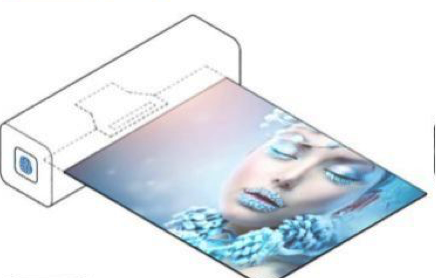Vertical Divider
|
Samsung Display (SDC) at CES 2018
January 15, 2018 Samsung showed a 7.3” inward folding display in a smartphone mockup. The device was twice the thickness of a typical smartphone and definitely not a real product. Samsung Display still has technical issues with the foldable display and while Samsung Electronics would like to release a product this year, it is questionable whether the issues can be resolved this year. SDC also showed a 9” rollable display that was also a prototype. Figure 1: Samsung’s Rollable Tablet Source: Samsung
The display that drew the most interest on the floor was Samsung Electronics’ 144” 4K Wall that was composed of multiple micro LED panels. The display had comparable contrast to OLEDs and had very viewing angle degradation. The display had a very low pixel density for its size, but it was just a prototype. When asked about timing, Samsung representatives gave a very loose estimate of 1 -9 years. Figure 2: Samsung Electronic’s Micro LED—“the Wall” Source: Samsung
Commercialization of Micro LED displays are advancing since Sony unveiled CLEDIS (crystal LED integrated structure) display based micro LED technology in 2016. As the key technology of mass transfer has yet to mature, micro LEDs will be initially applied to smart wearable devices and large-size displays which do not require high ppi (pixel per inch) levels, such as the Wall. As "pick and place" process is difficult for volume production for micro LED displays researchers from Sophia University's Graduate School of Science and Technology in Japan, the University of Tokyo's Institute of Industrial Science, and US-based Ostendo Technologies, are developing monolithic process where a RGB array is formed on a micro LED wafer that can be directly used on a display. Based on the current development, there are two directions for applying micro LED technology: one is small displays with 200-300ppi for wearables, and the other is 55-inch and larger displays with low ppi such as 15ppi. The low resolution is unnoticeable when viewed from a distance as evidenced by the Wall. SDC also showed a 55” LCD TV with a QD based color filter. It was placed in a dark corner of their suite and seemed rather dull, clearly not as bright as the film based versions. Synaptics, which makes the front sensor that enables in-display fingerprint scanning, announced that Vivo would become its first customer. But CES 2018 gave Vivo its first chance to show off the sensor in action, and it was a sight to behold. The process was so seamless, if you blink, you’ll miss it. During a demonstration, a Vivo representative woke her phone by raising it, and a little blue icon appeared on the display where the home button might normally be situated. Once she placed her fingerprint on the lit-up sensor, the phone unlocked and the on-screen sensor disappeared, leaving her to enjoy the full-screen view of the Vivo phone. Samsung in their private booth showed an OLED Smartphone panel w/Fingerprint sensor in front, but there was no demonstration. Trying to fit a fingerprint sensor on the front of a phone while also expanding the length of displays has bedeviled phone makers. For last year’s Galaxy S8 and Note 8 flagships, Samsung wound up placing the fingerprint sensor on the back of its phones to accommodate the new Infinity display, while Apple did away with the fingerprint sensor entirely on its iPhone X. Vivo may not be as well known as those two giants, but the Synaptics-built sensor gives its upcoming phone a noteworthy feature. |
|
|
Contact Us
|
Barry Young
|


